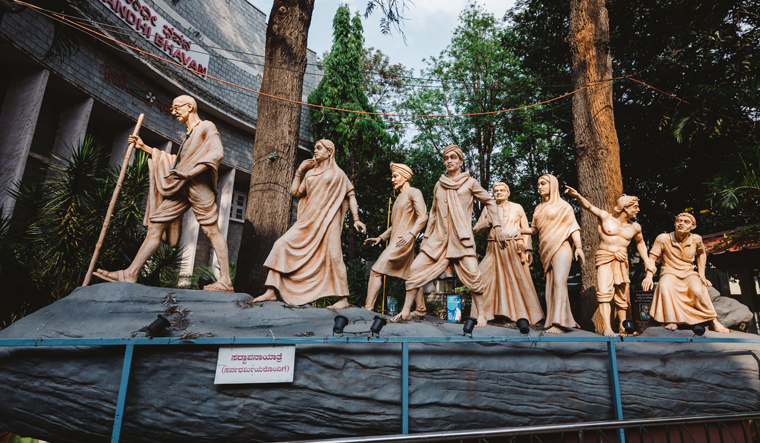Let's say you wish to visit the Nashipur Rajbari Museum in the historic city of Murshidabad, the capital of Bengal in the Mughal period. The private museum was once the palace of Debi Singha, a renowned tax collector in the days of the British Raj, in the erstwhile princely state of Nashipur.
A cursory google search will direct you to the website of Museums of India, a portal for museum-mapping by Sahapedia, an online knowledge resource for India’s arts, cultures and heritage. You might even stumble upon it before any TripAdvisor ratings, Facebook pages or YouTube videos. You might even see it before the almighty Wikipedia entry. This top-of-the-heap presence of the website for the lesser-known museum is explained by the detailed dashboard, and 15 striking images of the same. It lists out all the useful information an interested traveller may look out for. For instance: Are there any docents or guides who visitors can directly call to book for a guided tour? No; Photography:No; Videography: No; Cafeteria: No; Museum shop: No; Wheelchair friendly: No; Restroom: Yes; Drinking water: No; Locker room: No; Parking: Yes; Information in Braille: No.
So far, Museumsofindia.org has mapped 250 museums across the country, since it launched last year on International Museum Day, which is observed on May 18. They are big and small, private and public, popular and obscure. There are museums on brain, toilet, transport, utensils and much more. And it seeks to bring 950 more museums within its virtual ambit, with the help of interns, local enthusiasts and museum professionals in the next few years.
Not bad for Sahapedia, which sought to become the Wikipedia for Indian cultural heritage when in first launched in 2016. "The biggest challenge right now is to keep the information dynamic, to get museum stakeholders to come on board and update information on our website to keep it current," says Vaibhav Chauhan, Secretary, Sahapedia, on how their museum project can really take off and include changes like entry rates or list events like ongoing workshops, seminars and exhibitions.
As Sahapedia celebrates International Museum Day this year with multiple curated walks and workshops across 15 cities, it has consciously adopted the theme of "Hyper-connected museums: New approaches, new publics" for its museum website. This is also the chosen theme of International Council of Museums (ICOM) in 2018, a global body which opines best practices in museum promotion and management.
What could hyper-connectedness entail for an India museum-mapping website? It essentially means using technology to its fullest potential in the transmission of information and create a robust ecosystem for museum-goers, museum professionals and the museums themselves. Aside from creating the dashboard feature this year, Sahapedia's Museumsofindia.org has struck a collaboration with National Institute of Design which has a course on exhibition design. Fifteen students from the institute help in information gathering, mapping and designing and further feasibility studies for the website's development.
Chauhan admits that most museums in India do not have the infrastructure or the staff to actively engage with such websites. "There has to be some incentivisation for the museums to start using this. Right now we are in the process of figuring that out. Can our website help in their documentation and ticketing as well? We are also thinking of such features which go beyond dynamic information on our website. It has to offer something to them also," says Chauhan.


